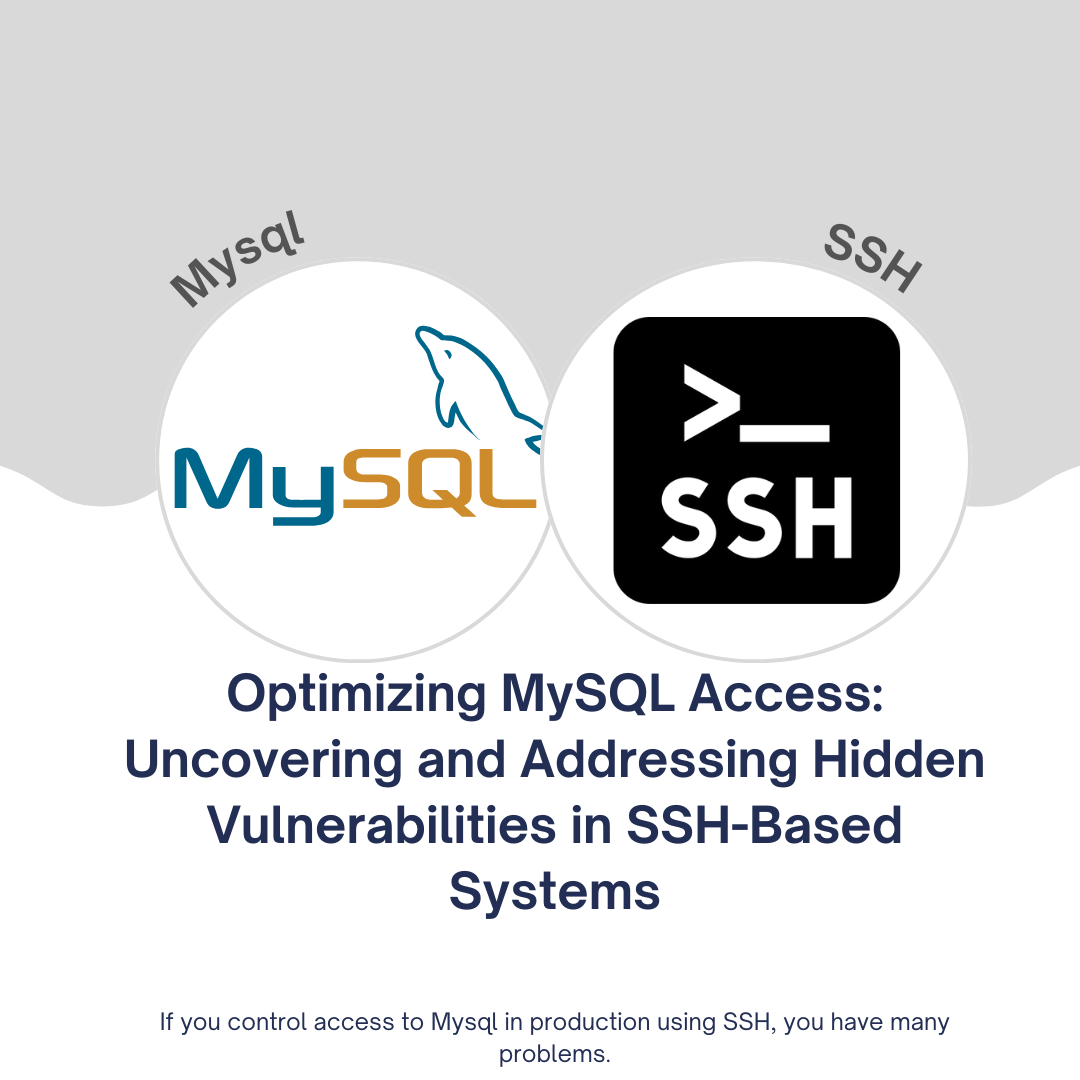Optimizing MySQL Access: Uncovering and Addressing Hidden Vulnerabilities in SSH-Based Systems

If you're managing access to MySQL in a production environment using SSH, you might be facing several challenges that can impact your workflow, security, and compliance. In this article, we'll explore the five biggest problems associated with MySQL SSH access, their implications, and practical strategies to mitigate these issues.
The Challenges of MySQL SSH Access
1. Fast Access is Crucial
In a production environment, quick access to the right engineers is essential for maintaining product speed. Whether you're troubleshooting, fixing bugs, or resolving incidents, fast data access is pivotal to your success.
2. Inefficient Access Solutions
Unfortunately, many teams use inefficient solutions for granting MySQL access. These solutions can lead to significant security risks or create bottlenecks in your workflow.
3. Building SSH-Based Infrastructure
Setting up infrastructure for MySQL access using SSH can be a painful and time-consuming process. It often involves numerous components and configurations.
4. Hidden Vulnerabilities
Hidden vulnerabilities lurk within your access management system, posing potential risks that are often overlooked. These vulnerabilities can be exploited by attackers and may include:
- Lack of Single Sign-On (SSO) & Multi-Factor Authentication (MFA)
- Insufficient Audit Trials and Personal Identifiable Information (PII) Protection
- Compliance Issues (GDPR, PCI, SOC2, HIPAA)
- Poor Developer Experience
Practical Solutions
1. Implement Gradual Improvements
Use the 80/20 rule to incrementally address these challenges. Start by integrating the following features:
- Add MySQL to Systems You Already Manage
If you're already using tools like Google Workspaces, you don't necessarily need a separate LDAP directory. Seek ways to integrate MySQL access with existing systems.
- Integrate Single Sign-On (SSO)
Implementing SSO for SSH access can be complex. Consider utilizing tools like AWS/Google Cloud's Cloud Shell solutions or Runops to simplify this process. Don't make SSO a burdensome project; instead, leverage Google OAuth if feasible.
- Prioritize Features Based on Industry
Different industries have varying requirements. Focus on MySQL access features that align with your industry's needs. For example:
- Developer-Centric Industries: Concentrate on improving Developer Experience, SSO, and MFA. Streamline the process and aim to reduce the steps required to access MySQL.
- Highly Regulated Industries (e.g., Fintech): Compliance is paramount. Invest in audit capabilities even if it means having more steps in your workflow initially.
2. Embrace Comprehensive Solutions
Simplify your access management by adopting tools that address more than just MySQL access. Consider solutions that can manage:
- MySQL
- AWS/GCP
- Other Databases
- Kubernetes
- Servers
A single tool that covers a wide array of access needs can reduce complexity and streamline your operations. For example, Runops offers a unified approach to managing various access requirements.
3. Add Friction to Undesired Access Methods
Sometimes, teams may prefer insecure but faster access methods. To encourage the use of more secure methods, consider adding friction to the undesired access routes. For instance:
- Introduce Form Submissions
If a particular access method lacks audit trails or compliance features but is faster, add a form submission step to incentivize the ideal method. This additional step can discourage the use of less secure options.
- Restrict Access Behind Requests
For tasks like modifying configurations through a web console, put them behind a request system (e.g., Jira). While this may temporarily inconvenience teams, it encourages a more controlled and secure approach. Over time, you can enhance the experience to surpass the convenience of the console.
In conclusion, managing MySQL access through SSH can be challenging, but by following these four steps, you can address the hidden vulnerabilities, enhance security, improve workflow efficiency, and better align your access management with industry-specific requirements. Gradual improvements, comprehensive solutions, and strategic friction can help you strike the right balance between access speed and security.
